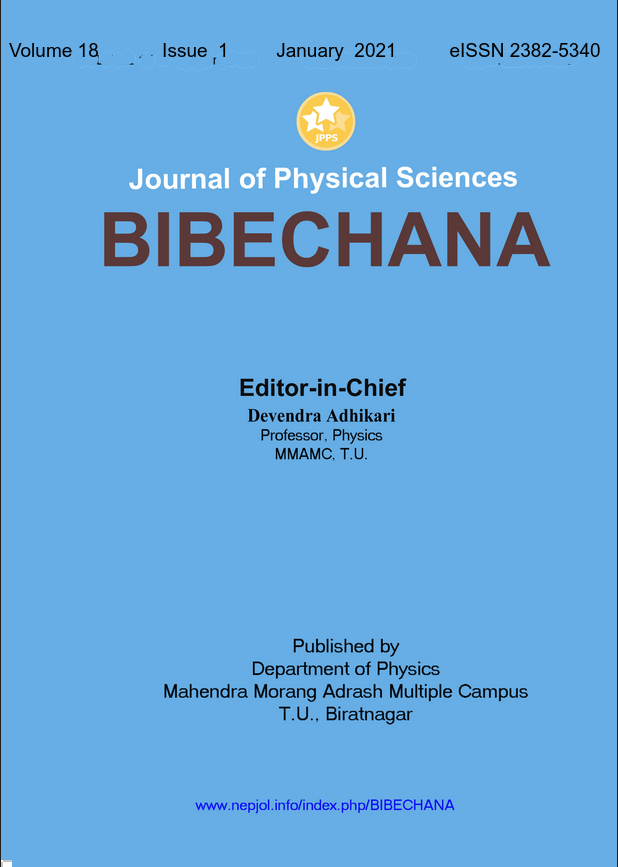Study of aerosol optical properties at different tourist places of Nepal
DOI:
https://doi.org/10.3126/bibechana.v18i1.29906Keywords:
Aerosol optical depth (AOD), Angstrom exponent, Cloud condensation, Cross-correlation coefficientAbstract
A comparative study of aerosol optical properties at different tourist places of Nepal has been performed. Langtang BC, Lumbini, Pokhara, Kathmandu-bode, EVK2-CNR, Jomsom, and Kyanjin_Gompa were the places chosen for observation. We have analyzed the monthly and seasonal variation of aerosol optical properties for a different year of the above-mentioned places. AOD was found to be maximum in spring due to vegetation fire and land clearing for crop cultivation and, then in winter due to biomass burning, heating needs, pollution from bricks kilns, factories, and vehicles that contribute to winter haze. It consequently decreases in summer and was found to be minimum in autumn as summer constituent both dry and wet days and autumn starts with the ending of monsoon. But it was quite different in the case of Pokhara where it was minimum in summer than in autumn as Pokhara is the only city where maximum rainfall occurs in summer. We have also studied the relation between AOD and the corresponding wavelength. It was acclaimed that the AOD of shorter wavelength is more than the longer one which is because of the angstrom exponent. The relation between AOD and precipitated water has been observed and noticed one to one correspondence except July and August. The cross-correlation between these two factors found to be very high indicating a time lag of approximately 2 months with the presence of aerosol on cloud condensation nuclei (CCN).
BIBECHANA 18 (1) (2021) 170-183
Downloads
Downloads
Published
How to Cite
Issue
Section
License
This license enables reusers to distribute, remix, adapt, and build upon the material in any medium or format for noncommercial purposes only, and only so long as attribution is given to the creator.




